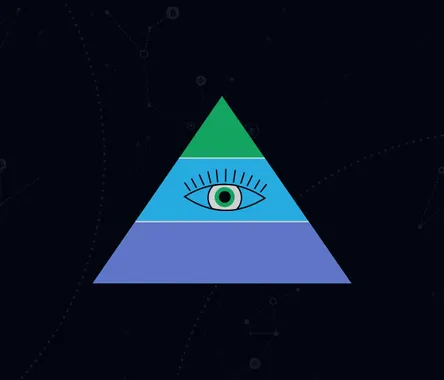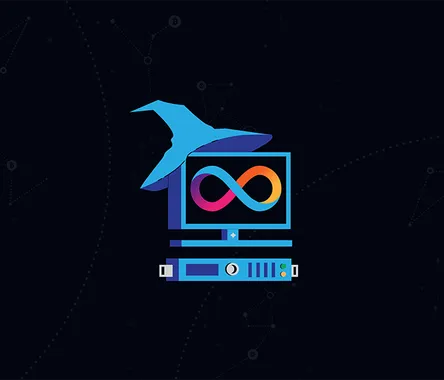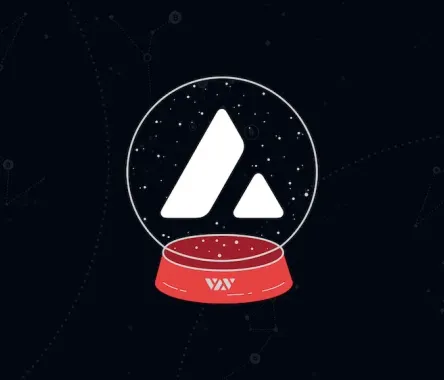What are Binance Chain and Binance Smart Chain?
The Binance Chain was envisioned during the launch of the popular exchange platform. The network was meant to become the native blockchain of the project, with it users can issue, use, and exchange digital assets in a decentralized manner.
Since the first product to use the network was the Binance DEX it was mainly designed to facilitate trading of assets. The Binance Coin BNB was one of the first crypto tokens to be traded on the platform, after it was migrated form Ethereum to the Binance Chain.
However, with the growth of DeFi and the popularity of dApps, the company decided to create the Binance Smart Chain (BSC) which has an EVM support and can handle smart contracts, since the Binance Chain is optimized for “ultra-fast” trading, which means that besides trading platforms like exchanges there weren’t many other functionalities giving the network an opportunity to shine. In February 2022 the Binance Smart Chain rebranded to BNB Chain.
The two blockchains operate simultaneously, with BNB Chain being referred to as a Layer 2 scalability solution. However, even if one of them would go off-line the other blockchain can continue functioning. Since the two networks can communicate with each other, users can easily move currencies between them.
BNB Chain supports staking and utilizes a PoS consensus mechanism allowing higher transaction speeds, through it Binance Coin holders can stake the token and vote on governance parameters of the platform. Binance Chain also utilizes PoS mechanics and supports staking.
How does Binance Chain work?
The Binance Chain achieves consensus through a process called Delagated Proof of Stake or DPoS, through which users having staked the network’s token can choose a validator on which to place their staking power. The total number of validators supported by the network is eleven and a new block is generated for less than a second.
The network acts as a peer-to-peer distributed system and uses Tendermint’s BFT consensus solution as well as its block structure. The size of each block on the network has a size limit of 1 megabyte and can include from 0 to thousands of transactions.
BNB token holders can submit proposals for adding support for more trading pairs on the network, which can only be voted on after the user submitting the proposal has deposited a certain amount of BNB to a wallet tasked only with holding funds during proposals and managed solely by the blockchain. If the initial deposit is not sufficient, other users are allowed to take part in providing funds in order to bring it to the voting phase, where any BNB holder can voice their opinion.
How does Binance Smart Chain work?
When achieving consensus, the BNB Chain had set a list of requirements it needs to meet before designing it. The list includes blocking time being shorter than the one the Ethereum network has, limited time to confirm the finality of transactions – set to 1 minute or shorter. Each block’s reward is collected from transaction fees paid in BNB. The blockchain was designed to resemble the Ethereum network as much as possible, however, with a decentralized proof-of-staked-authority governance system.
Since the PoA protocol is often criticized for not being as decentralized as the PoW method, because its validators have all the authority and are prone to corruption and security attacks, the team behind BNB Chain decided to combine this method with a Delegated Proof of Stake (DPoS) algorithm. The company manages to limit the set of validators being able to produce blocks, they are required to take turns in the production of blocks, and are elected in and out based on the protocol’s governance votes. Each 24 hours, the top 21 most staked nodes become the next validator set through an election process.
In order for the community to be able to take advantage of the dual chain structure employed by the project, the team has developed cross-chain transfer and communication protocols. These protocols can be used to create any kind of token, financial product, or another type of digital asset supported by BNB Chain or BC. These assets can then be programmed, traded, and used in the large Binance ecosystem and outside of it.
When doing a cross-chain transfer, the blockchain from which assets are transferred locks the amount to be traded from the source owner’s address into a system-controlled address or smart contract, while the blockchain to which assets are transferred, unlocks the amount from the system-controlled address and sends it to the target address.
There are a number of digital assets existing on the network as ‘Peggy coins’, this means they are pegged to an asset on their native chain and are now ported to the Binance Chain. This can be done to further use the assets to fuel dApps built on the Binance Smart Chain using all its features.
Binance Smart Chain supports smart contract functionality, enabling developers to create decentralized applications (dApps) and execute programmable agreements on the platform. It utilizes the Ethereum Virtual Machine (EVM) compatible environment, which means that developers familiar with Ethereum's Solidity programming language can easily port their applications to Binance Smart Chain.
On June 10, 2023, the BNB Chain ecosystem rolled out a series of upgrades to the network, including the highly anticipated BEP-126 update, featuring the introduction of Fast Finality. This significant development marks a major leap forward in enhancing the security and transaction reliability within the BNB Chain ecosystem.
With Fast Finality, block reorganizations are now a thing of the past, leading to improved security against double-spend and MEV reorg attacks. Transactions are irreversible upon confirmation, ensuring user trust and confidence in the system. The update also brings more efficient operations for exchanges and DeFi protocols.
The focus of BEP-126 is solely on fortifying the security and reliability of the BNB Chain ecosystem, without directly impacting transaction speed or reducing fees.
Along it the project also introduced BEP-174: Cross Chain Relayer Management. The BNB Chain BEP-174 update, focuses on enhancing the security of the BSC Bridge by mitigating potential security issues. In 2022, attacks on bridges were a significant security threat in the crypto sector, making this update critical for deploying solutions.
The update introduces "managers" for relayers, who are on-chain messengers responsible for transferring tokens between different blockchains via bridges. Previously, relayers were manually added through a complex process, but now, on-chain governance selects these managers. They streamline the registration of individual relayers, enabling easy removal or addition of relayers during potential crises.
Furthermore, BEP-221: CometBFT Light Block Validation was introduced. With the implementation of BEP-221, the BNB Chain ecosystem introduces "CometBFT Light Block Validation," designed for blockchains utilizing CometBFT technology.
This update proposes adding a new contract to the blockchains, allowing for the verification of specific blocks from other CometBFT-compatible blockchains. Additionally, it enables the seamless transfer of data between these blockchains, fostering interoperability between projects like the storage-focused BNB Greenfield and the BNB Chain.
How to use Binance Chain and Binance Smart Chain?
Binance Smart Chain operates in parallel with the Binance Chain, creating a dual-chain architecture. While Binance Smart Chain focuses on providing smart contract capabilities and high-speed transactions, Binance Chain is optimized for fast and efficient trading. This complementary relationship allows users to benefit from the strengths of both chains and access a wide range of services offered by the Binance ecosystem.Binance Chain can be used for sending and receiving digital assets as well as issuing them and using the network for exchange and transfer. Besides that, the blockchain allows tokens to be minted and burned as well as frozen and unfrozen. However, its main purpose remains to facilitate the Binance DEX.
Users can also participate in the network by running a “full node” that skims through and broadcasts live updates on transactions and blocks, while also taking part in achieving consensus over the network’s state. To do so, and connect to the Binance Chain, users need to meet a minimum system requirement and have basic programming knowledge, although the process is explained in detail by the Binance team on their website.
Since BNB is the native token of Binance Chain, fees for transactions on the network are collected in it. The company states that the main difference between its Binance Chain and Ethereum is that there is no notion of gas, which results in fixed fees for transactions depending on the transaction itself; a full list of fees is available on the official documentation of the project. The blockchain supports WalletConnect’s protocol as a tool for connecting a crypto wallet to Binance Chain.
The Binance Smart Chain’s EVM compatibility is its main advantage, through it developers can easily port their projects to the network and take advantage of its low fees, high scalability and speeds. The network boasts about achieving ~3 second block times thanks to the proof-of-staked-authority consensus algorithm in use.
The project allows its users to send BEP2 tokens cross-chain as well as explore all transactions occurring on the network. Another of its main features is BNB staking.
Binance Smart Chain facilitates the issuance of new tokens and digital assets much like any other blockchain, and allows its users to run nodes and participate in the network’s activities through it.
Staking BNB
In the original whitepaper of BNB Chain the network’s staking and governance process is described as having similar ideas as other networks like Cosmos and EOS. When staking, token holders can delegate their tokens to any validator or validator candidate. Later, this process can be repeated and token holders can re-delegate their funds to a different validator.
Validator candidates are ranked depending on the number of bonded tokens on them, with the top ones becoming active validators on the network. As such, they are allowed to share part of or the whole of their blocking rewards with their delegators. There is an unbonding period for validators and delegators aimed to make sure the bonded tokens remain such, if bad behavior is caught, so that the slashing “punishment” can be implemented.
Slashing can be triggered by anyone after submitting a BNB Chain slash transaction, which requires evidence and costs fees, but brings rewards if successful. There are two scenarios where slashing can be applied.
In the first case, if a validator signs more than one block with the same height and parent block, the error is seen as a serious one and likely deliberate offense. If such a malicious action is discovered, the validator gets removed from the validating set immediately. Following that, a predefined amount of BNB is slashed from the validator’s self-delegated BNB, and no rewards are issued neither to the validator, nor to his delegators. Part of the slashed BNB is allocated to the submitter’s address, while the rest is allocated to other validator’s custody addresses and then distributed to all delegators similarly to blocking rewards.
The second case in which slashing can be applied is when a validator has missed their turn to produce blocks on the network. This may happen for any reason, such as problems in their hardware, software or network connectivity. To account for the blocks which have not been produced timely, BNB Chain has an internal smart contract which records the missing blocking metrics of each validator. If they are found to be above predetermined levels, the blocking rewards are not relayed to the Binance Chain for distribution. Instead, the reward is shared with the rest of the validators.
Rewards distribution happens each day around UTC 00:00 to save the cost of frequent staking updates and block rewards distribution. Blocking rewards are not sent to validators straight away, instead, they are distributed and accumulated on a contract. When the validator set update is received, it triggers some cross-chain transfers to distribute the rewards to custody addresses of the corresponding validators. Since the funds are held in a system owned custody addresses, they cannot be spent before the delegators’ promised revenue has been distributed. Since this process takes time, rewards are distributed for two days prior to the distribution.
The BNB token
BNB powers the Binance Chain ecosystem, but is also the native token of the Binance Beacon Chain and the Binance Smart Chain. The token reduces trading fees on the Binance exchange, when used to pay for them, it is also used as means of payment for transactions on the Beacon and Smart Chains.
Since the company issues Binance Cards and has a payment app for fiat payments with cryptocurrency, its BNB token can also be used to pay for services outside the crypto world. The coin also gives rights to its holders in the participation of token sales hosted on the Binance Launchpad, and can be used to provide liquidity on the Binance Liquid Swap.
The token launched 11 days before the Binance Exchange became operational in late June early July 2017. During the ICO, the launch price of BNB was 1 ETH for 2,700 BNB or 1 BTC for 20,000 BNB. Although initially the token was issued based on the ERC-20 standard with a total supply of 200 million coins, half of which were offered in the ICO, the current total supply is lower thanks to periodic burning events and various burning mechanisms.
In April 2019, the ERC-20 BNB token was swapped to a BEP-2 BNB at a 1:1 ratio. The new token became the native coin of the Binance Chain, and later the Binance Smart Chain.
Is Binance Chain safe?
Binance was founded by Changpeng Zhao, a developer with a rich experience in the creation of high frequency trading software. The company was originally based in China, but after the heavy regulations imposed by the Chinese government on cryptocurrency was moved outside the country.
In 2021, the company was put under investigation by the US Department of Justice and the Internal Revenue Service on allegations of money laundering and tax offenses, around the same time the UK’s Financial Conduct Authority forced Binance to stop all regulated activity in the United Kingdom.
According to the company’s CEO, there are 3,000 people working for Binance around the world, all of the members of the Binance Smart Chain team are part of Binance Labs, the company’s legal entity tasked with the development of the project.
Partners
Some of the most recent among the numerous partnerships established by the project through Binance Labs are with Ultiverse, SM Brand Marketing, AlwaysGeeky, and Symbiosis Finance.
Ultiverse is developing a connection between Web3 and a VR-compatible virtual world with a lucrative tokenomics allowing for beneficial relationships between various ecosystems, by allowing players to import their own NFTs from multi chains and supporting NFT and land customization. Binance led a seed funding round for the platform which will be used to develop the product, attract more employees to the project and increase its community. Another seed funding round recently led by Binance Labs is that of Tea – a company building open-source software platform on the blockchain.
The collaboration with SM Brand Marketing includes an agreement to establish a global Play-to-Create (P2C) ecosystem. This will start by the two companies collaborating on NFT projects and a joint eco-fund.
The venture capital also invested $1.1 million in AlwaysGeeky Games – the creator of the NFT project Voxies and a game called Voxies Tactics. Binance shared their plans on a long-term partnership with the project to further build out the blockchain gaming industry. The investment is meant to support the growth of the platform, by hiring additional developers.
Symbiosis Finance is seen as a strategic investment by Binance that will further enable the future of multi-chain liquidity. The funds given by Binance Labs will be used to facilitate the growth of the project amid its Mainnet launch in hopes of gaining support from more blockchains.
What's next?
The 2023 BNB Chain Tech Roadmap aims to focus on key areas to enhance the blockchain ecosystem:
- Scalability: BNB Chain intends to optimize performance by collaborating with the Ethereum community and leveraging emerging technologies like ZKP and Optimistic Rollups. The goal is to provide cost-effective and scalable solutions for decentralized applications, targeting millions of users.
- Decentralized Data Economy: BNB Chain envisions introducing BNB Greenfield, a storage network empowering a data economy. Users will gain control over their data, enabling activities like personal data markets, UGC exchange, and digital publishing.
- Multi-chain Solutions: BNB Chain plans to offer diverse options for different business cases. ZkBNB and Optimistic Rollup will cater to applications with massive users, while BNB SideChain will provide Ethereum compatibility. These solutions will support open platforms, tokenomics, and secure data availability.
- Security: AvengerDAO intends to safeguard users from financial losses and malicious contracts. Real-time alerts (Watch) and secure fund transfers (Vault) will be introduced. Cross-chain security will be tightened, enhancing inter-chain transaction reliability.
- Progressive Decentralization: BNB Chain aims to expand decentralization efforts by increasing active validators from 29 to 100. Anyone will be able to run for a validator, encouraging community participation and resilience against attacks.
- BNB Mass Adoption Infrastructure: Developer-friendly toolkits and infrastructure enhancements will be prioritized. Account abstraction, wallet services, web3 identity, gaming infrastructure, data indexing, and communication layers will improve user experience and application development.
Links
https://docs.binance.org/index.html
https://www.binance.com/en

 Arbitrum
Arbitrum





